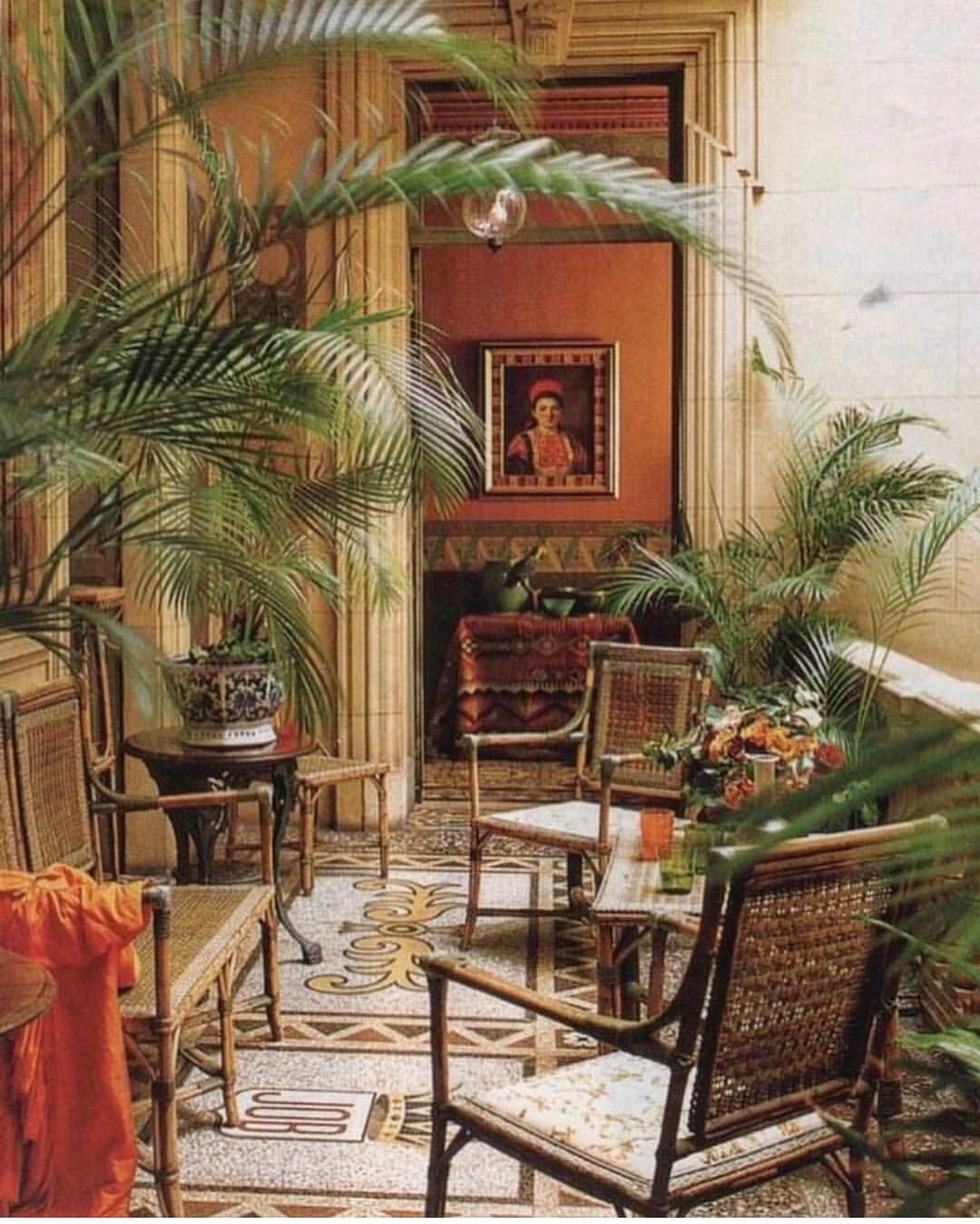Step into a world where the elegance of France meets the vibrant cultures of Southeast Asia and the Caribbean. French Colonial interior design, a timeless fusion of styles, evokes a sense of wanderlust and refined living. Imagine grand houses adorned with intricate carvings and luxurious fabrics, or charming cottages whispering tales of the French countryside. With its high ceilings, airy verandas, and a seamless blend of European sophistication and exotic influences, French Colonial design transports you to a realm of timeless beauty.
French Colonial Interior Design: A Timeless Fusion
French Colonial interior design captivates with its unique ability to transport you to another time and place. This captivating style, born from the fusion of French elegance and the exotic allure of colonial influences, creates spaces that are both grand and inviting.
Imagine European colonizers, seeking new horizons, bringing with them their love for ornate details and sophisticated aesthetics. As they settled in distant lands, they began to infuse their designs with elements borrowed from the local cultures, resulting in a captivating blend of styles. Imagine breezy verandas overlooking lush tropical landscapes, intricately carved wooden furniture sitting alongside woven bamboo mats – a harmonious marriage of two worlds.
While rooted in history, French Colonial interior design is far from stuck in the past. Modern designers have given it a fresh twist, creating what we now call Modern Colonial. Picture light and airy rooms bathed in calming neutrals. Sleek, shiplap walls and rich, dark hardwood floors, perhaps accented with vibrant patterned tiles, create a clean and contemporary feel. Modern Colonial captures the essence of the past while embracing a clean, contemporary feel, allowing you to honor history while adding your own personal touch.
For those drawn to a cozier, more rustic vibe, French Country offers a charming alternative. Picture charming farmhouses nestled amidst rolling vineyards, their interiors exuding warmth and character. Exposed beams, timeworn patinas, and walls painted in earthy hues create a sense of rustic elegance. Splashes of sunny yellows, vibrant reds, and cheerful floral patterns complete the look, creating a space that feels like a warm hug.
No exploration of French Colonial design would be complete without mentioning its captivating architecture. These homes, with their soaring ceilings, designed to provide a cool respite in tropical climates, exude a sense of airiness and grandeur. Tall, narrow windows and doors, often adorned with intricate grilles, allow dappled light to filter in while maintaining a sense of privacy. And then there are the verandas – those iconic wraparound porches, also known as galéries, that blur the lines between indoors and out. They’re perfect for sipping lemonade on balmy evenings or enjoying a leisurely breakfast while basking in the morning sun.
The beauty of French Colonial design lies in its versatility. It’s a style that invites you to explore its many facets:
- Cultural Influences: Delve deeper into the specific colonial cultures – think Vietnam, Morocco, or Senegal – that left their mark on French Colonial design, influencing everything from color palettes to furniture styles.
- Lighting Techniques: Light plays a crucial role in creating the right ambiance. Consider the interplay of natural light pouring in through those tall windows and the warm glow of strategically placed lamps and chandeliers.
- Adaptability: French Colonial is incredibly adaptable. Whether you live in a modern apartment or a sprawling farmhouse, you can incorporate elements of this style to create a space that reflects your personality and lifestyle.
Embrace the allure of French Colonial design and let its timeless elegance transport you to a world of beauty and sophistication—a world where history and modern living intertwine in perfect harmony.
What Defines French Colonial Style?
French Colonial style masterfully blends the sophistication of a Parisian apartment with the laid-back ambiance of a tropical getaway. Imagine stately homes with breezy porches, perfect for sipping lemonade on a balmy evening, and you’ll capture the magic of French Colonial design.
Balancing Grandeur with Homeyness:
Symmetry reigns supreme in French Colonial design. Windows, doors, and architectural elements are carefully balanced, creating a sense of grandeur and order. Steeply pitched roofs add a touch of drama, making the homes appear taller and more imposing. Expansive wraparound porches, practically begging for a rocking chair or two, invite you to relax and enjoy the view.
Local Flavor, French Flair:
French Colonial style embraces the rustic charm of its surroundings. Warm-colored stucco walls, reminiscent of sun-drenched days, and wooden beams and shutters add warmth and a touch of handcrafted appeal. This interplay of elegance and rusticity creates a space that feels both grand and inviting.
A World of Inspiration:
French Colonial architecture, with its roots in French colonialism, is a global phenomenon. Each region where the French settled added its own unique twist to the style. In the Caribbean, you’ll find vibrant colors and open verandas designed to capture tropical breezes. In Southeast Asia, intricate carvings and vibrant fabrics reflect the rich cultural tapestry of the region. It’s fascinating to see how this single style evolved and adapted across the globe!
French Colonial Today: A Fresh Take:
French Colonial style remains relevant in today’s design world. Modern interpretations embrace clean lines and neutral hues, creating a serene and sophisticated aesthetic. Think calming creams and soft grays, punctuated by pops of color in pillows, artwork, or textiles. Modern Colonial allows you to blend timeless elegance with contemporary sensibilities, creating a space that feels both classic and fresh.
Want to learn even more? Check out “French Colonial Architecture: A Guide to Its History and Style” by The Spruce (https://www.thespruce.com/french-colonial-architecture-5194131).
Exploring the History of French Colonial Design
Stepping into a French Colonial home is akin to taking a trip back in time. This unique style, born out of necessity and a desire for grandeur, emerged when French colonists began establishing themselves in new territories in Asia and the Americas in the 16th and 17th centuries. French Colonial design represents a cultural exchange through architecture, blending European aesthetics with local materials and craftsmanship to create a truly captivating style.
Imagine airy verandas shaded by wide eaves, perfect for escaping the afternoon heat, and rooms bathed in sunlight streaming through tall, elegant windows. Let’s delve into the key elements that define this captivating style:
The French Colonial “Ingredients”:
- Nature Takes Center Stage: Imagine breezy rooms filled with furniture crafted from natural materials like rattan and bamboo, accented by woven palm prints. It’s like bringing the tropics indoors! Ornate moldings and graceful arches, all bathed in a palette of soft, calming colors, add a touch of European refinement.
- Open and Flowing: French Colonial homes embrace open floor plans that allow light and air to circulate freely, creating an inviting, breezy atmosphere ideal for socializing and enjoying life to the fullest.
- Blurring the Lines: One of the most defining features of French Colonial design is its ability to connect the indoors with the beauty of nature. Massive windows and doors serve as picture frames, showcasing lush landscapes and inviting the outdoors in.
A Global Footprint:
French Colonial architecture spread throughout the territories where France once held sway. You can still find stunning examples of these historic homes and grand mansions in places like Louisiana, Vietnam, and Cambodia—each with its own regional twist.
A Blast from the Past:
The 20th century witnessed a resurgence of interest in French Colonial design. People, longing for old-world charm, embraced the style’s timeless elements. Architects and interior designers incorporated elements like cozy breakfast nooks, sprawling verandas, and romantic bedrooms into modern homes, especially in the United States.
Keeping it Fresh:
French Colonial design, far from being a relic of the past, continues to evolve. Today, it’s all about blending classic elements with modern sensibilities. Think sustainable materials, streamlined furniture, and layouts that prioritize functionality without sacrificing an ounce of style. Imagine, for instance, a sleek, modern kitchen outfitted with cabinets painted in those signature soft hues, or a light-filled living room adorned with a blend of antique and contemporary furniture.
French Colonial design is more than just a look—it’s a feeling. It’s a reminder that beauty can be found in blending cultures and embracing the past while looking to the future.
Key Elements of French Colonial Interiors
We’ve explored the history and overall feel of French Colonial design, but let’s dive into the specific elements that make this style so unique.
Bringing the Outdoors In: Natural Materials and a Warm Embrace
Stepping into a French Colonial home, you’ll immediately notice the warmth. This warmth extends beyond a welcoming atmosphere; it’s about the materials themselves. Exposed wooden beams overhead, with their rich grains, tell a story of time and craftsmanship. Stone floors, cool underfoot, ground the space and hint at the building’s enduring strength. And metal accents, perhaps in lighting fixtures or door hardware, are chosen for their aged patina, speaking to a history far beyond the latest trends.
The color palette within a French Colonial home is soft and soothing. Gentle beige, calming cream, and crisp white create a sense of spaciousness and tranquility, like taking a deep breath of fresh air.
Timeless Elegance: Classic Furniture with a Story to Tell
Imagine settling into a beautiful armchair. Its curved legs, called “cabriole legs,” seem to flow like a dancer’s pose, and the back is adorned with delicate “ribbon” carvings that look almost like folded silk. This is classic French Colonial furniture – pieces that are both elegant and inviting, whispering tales of generations past.
The fabrics themselves add another layer of richness to a French Colonial interior. Plush velvet upholstery in deep jewel tones might adorn a settee, while dining chairs might boast linen covers with intricate floral or geometric patterns. Every piece feels like it has a story to tell, inviting you to create new memories within its embrace.
A Fusion of Cultures: Handmade Details and Local Flair
One of the most captivating aspects of French Colonial style is its celebration of craftsmanship and cultural fusion. Skilled local artisans often crafted furniture and decorative objects, imbuing each piece with unique character. Intricate carvings might depict local flora and fauna, while woven textiles could showcase traditional patterns passed down through generations. It’s this blending of European elegance with indigenous artistry that truly sets French Colonial design apart. It’s a style that speaks of global adventures, of cultures intertwining, and of creating a home that reflects the beauty of both worlds.
Key Points of French Colonial Interior Design:
- Fusion of French elegance and exotic colonial influences from faraway lands.
- Breezy verandas, intricate wooden furniture, and woven bamboo mats create a harmonious blend.
- Modern Colonial offers a fresh twist with calming neutrals, sleek lines, and vibrant tiles.
- French Country exudes warmth and character with exposed beams, patinas, and earthy hues.
- Architectural details include towering ceilings, tall windows, and wraparound verandas.
- Versatility allows for exploration of cultural influences, lighting techniques, and adaptability to various settings.
- Light plays a significant role in creating the right ambiance.
- French Colonial can be incorporated into both modern apartments and sprawling farmhouses.
Condensed & Organized Context of French Colonial Style:
Key Line 1: French Colonial design seamlessly blends French sophistication with exotic influences, creating an inviting and elegant aesthetic.
- French Colonial interior design combines the elegance of French style with the rustic charm of exotic locales like the Caribbean and Southeast Asia.
- It features a warm and inviting atmosphere that embraces the local culture and environment.
Key Line 2: French Colonial homes are characterized by their symmetrical lines, steeply pitched roofs, and large, wrap-around porches, adding a touch of grandeur to their surroundings.
- French Colonial homes typically follow a symmetrical design, with a balanced arrangement of windows, doors, and other architectural elements.
- They often have steeply pitched roofs that accentuate their height and add a touch of drama.
- Large, wrap-around porches provide ample space for relaxation and entertainment, creating a sense of openness and grandeur.
Key Line 3: The rustic charm of local materials, such as stucco and wood, is harmoniously incorporated into French Colonial homes, fostering a sense of warmth and authenticity.
- French Colonial homes incorporate local materials, such as stucco and wood, which add a sense of warmth and authenticity to the design.
- Stucco walls, often finished in warm colors, create a textured and earthy feel.
- Wooden elements, such as beams and shutters, contribute to the rustic charm and evoke a sense of local craftsmanship.
Key Line 4: French Colonial architecture can be found in diverse regions around the world, with each region’s climate and culture influencing unique variations in the style.
- French Colonial architecture is not limited to France itself but can be found in regions that were once under French colonial rule.
- The style varies depending on the climate and culture of each region, resulting in unique interpretations of French Colonial architecture.
- For example, in the Caribbean, French Colonial homes feature bright colors and open verandas to adapt to the warm tropical climate.
Unique Insights into French Colonial Design:
- Potential to explore the specific design elements and furnishings that embody French Colonial style, such as intricate moldings, wrought iron accents, and tropical-inspired fabrics.
- Opportunity to delve into the historical context of French Colonialism and its impact on the development of French Colonial design, providing a deeper understanding of the style’s origins and evolution.
- Exploring the modern-day revival of French Colonial design and how it is being reinterpreted by contemporary designers, offering fresh perspectives on the style.
Exploring the History of French Colonial Design: Key Lines
- French Colonial Interior Design: A Timeless Blend of Cultures: Embracing European elegance and Asian influences, this design style exudes a captivating charm that transcends time and place.
- Key Elements of French Colonial Design: Natural elements, such as rattan, bamboo, and palm prints, combine with ornate moldings, arches, and soft, neutral hues to create a harmonious and inviting ambiance.
- French Colonial Revival Movement in the US: The 20th century witnessed a resurgence of interest in French Colonial design, with architects and interior designers incorporating its elements into homes across America.
- Evolution of French Colonial Design: Over the years, French Colonial design has evolved to reflect contemporary tastes, seamlessly blending elements from various eras and cultures.
- Grass Forever in Livermore: Your Guide to Artificial Turf - April 22, 2025
- German Roaches vs. American Roaches: Key Differences and Control - April 22, 2025
- 150+ Flowers That Start With S: A Comprehensive Guide - April 22, 2025










